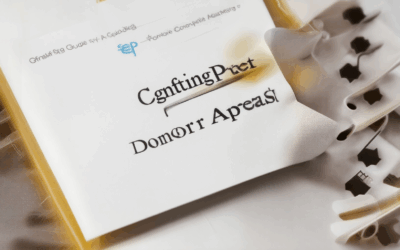Storytelling has always been a powerful tool for shaping perspectives and inspiring change, and nowhere is this more evident than in the realm of nonprofit organizations. In an era where emotions drive decisions and connectivity defines impact, effective storytelling for nonprofits has become a cornerstone of successful fundraising and advocacy efforts. Whether through heartfelt narratives that highlight mission-driven journeys or compelling tales that rally support around a cause, the ability to craft meaningful stories can transform lives and fuel social progress. From fostering emotional connections to motivating donors and volunteers, storytelling offers a unique avenue for nonprofits to amplify their voices and make a lasting difference. As we delve into the strategies, techniques, and real-world successes of those who have mastered this art, we’ll explore how effective storytelling for nonprofits can ignite passion, inspire action, and create a ripple effect of positive change.
Key Takeaways
- Storytelling builds trust and strengthens relationships by creating emotional connections and sharing authentic stories.
- It drives emotional engagement by resonating on a personal level and inspiring action through compelling narratives.
- Storytelling showcases impact and accountability by transparently highlighting achievements and challenges, demonstrating effectiveness.
- Well-told stories facilitate fundraising success by appealing to emotions and increasing donation rates in appeals and campaigns.
- It encourages volunteer involvement by motivating others to join in through shared impact stories and a sense of shared purpose.
- Consistent storytelling enhances brand identity by creating a recognizable narrative around the nonprofit’s mission and values.
- Storytelling empowers community advocacy by mobilizing support and amplifying voices to drive collective action.
- It supports mission-aligned marketing by creating cohesive narratives across digital, social, and traditional channels.
- Effective storytelling encourages innovation and adaptation, allowing nonprofits to remain relevant and responsive to changing needs.
- It provides a platform for feedback and dialogue, fostering two-way communication and tailoring programs to community needs.

What Are Some Effective Storytelling Strategies for Nonprofits to Engage Supporters?
Storytelling is a powerful tool for nonprofits to connect with donors, volunteers, and the broader community. By sharing compelling stories, nonprofits can foster emotional connections, build trust, and inspire action. Here are some proven storytelling strategies to help your organization engage supporters effectively:
1. Highlight Success Stories
Share impactful stories of how your nonprofit has made a difference. Whether it’s transforming lives through your programs or celebrating milestones, success stories humanize your mission and demonstrate your impact.
- Include personal narratives from beneficiaries
- Showcase progress reports
- Celebrate volunteer efforts
2. Use First-Person Narratives
Tell stories from the perspective of your beneficiaries, volunteers, or staff members. This approach makes the narrative more relatable and authentic.
- Feature volunteer testimonials
- Share stories of program participants
- Highlight personal journeys of change
3. Create Emotional Appeal
Storytelling that evokes emotions can deepen supporter connections. Focus on stories that highlight vulnerability, hope, and resilience to create a lasting impact.
- Share stories of overcoming challenges
- Depict scenes of hope and transformation
- Illustrate the human side of your work
4. Leverage Visual Media
Combine storytelling with visuals to enhance engagement. Videos, photos, and infographics can bring stories to life and make them more accessible to a wider audience.
- Create short video documentaries
- Use high-quality images
- Design impactful infographics
5. Encourage Community Sharing
Give supporters a platform to share their own stories about why they support your nonprofit. This fosters a sense of community and amplifies your message.
- Create a storytelling contest
- Feature supporter stories on your website
- Share stories via social media
By implementing these storytelling strategies, your nonprofit can create meaningful connections with supporters, increase engagement, and drive impactful outcomes. Explore more resources on nonprofit storytelling to further enhance your communication efforts.
What Makes Storytelling Effective for Nonprofits?
Storytelling is a powerful tool for nonprofits, enabling them to connect deeply with audiences, inspire action, and achieve their mission-driven goals. Here’s why storytelling is so impactful:
1. Builds Trust and Relationships
Storytelling fosters emotional connections, helping nonprofits establish credibility and trust with donors, volunteers, and the broader community. By sharing authentic stories, nonprofits humanize their work, making it relatable and inspiring.
2. Drives Emotional Engagement
Engagement is key to nonprofit success, and storytelling triggers emotions that motivate people to take action. Whether through heartwarming tales of impact or compelling narratives about challenges faced, stories resonate on a personal level, encouraging support and advocacy.
3. Showcases Impact and Accountability
Nonprofits often struggle to demonstrate their effectiveness. Storytelling provides a platform to showcase successes, highlight challenges overcome, and illustrate the tangible difference made by donations, volunteer efforts, or advocacy. This transparency builds trust and reinforces accountability.
4. Facilitates Fundraising Success
Well-told stories are proven to boost fundraising outcomes. They help nonprofits appeal to donors’ emotions, making requests more compelling and increasing the likelihood of contributions. By sharing stories of transformation and hope, nonprofits can inspire generosity and secure long-term support.
5. Encourages Volunteer Involvement
Storytelling can inspire individuals to take action beyond donating. Sharing stories of volunteers making a difference or highlighting the impact of community efforts can motivate others to join in, fostering a stronger sense of community and shared purpose.
6. Enhances Brand Identity
Consistent storytelling helps nonprofits build a distinct brand identity. A strong narrative framework allows organizations to communicate their mission, values, and vision consistently, making it easier for stakeholders to recognize and support the cause.
7. Empowers Community Advocacy
Stories have the power to mobilize communities. By sharing stories of those affected by the nonprofit’s work, organizations can rally support, amplify their voices, and drive collective action toward social change.
8. Supports Mission-Aligned Marketing
Storytelling aligns perfectly with nonprofit marketing objectives. It creates a cohesive narrative that resonates with target audiences, whether through digital campaigns, social media, email newsletters, or traditional outreach channels.
9. Encourages Innovation and Adaptation
Nonprofits operating in dynamic environments benefit from storytelling’s ability to adapt and evolve. By continuously refining their stories, organizations can stay relevant, explore new funding streams, and respond effectively to changing needs and challenges.
10. Provides a Platform for Feedback and Dialogue
Storytelling can facilitate two-way communication, allowing nonprofits to engage with stakeholders and gather feedback. This dialogue helps organizations understand community needs better and tailor their programs and services accordingly.
By leveraging the power of storytelling, nonprofits can achieve their mission goals more effectively, building lasting relationships and creating meaningful impact.

Best Practices for Effective Storytelling in Nonprofit Communications
Storytelling is a powerful tool for nonprofit communications, enabling organizations to connect deeply with stakeholders and drive social impact. To master this technique, consider the following best practices:
- Understand Your Audience : Begin by researching your target audience’s demographics, interests, and pain points. Tailor your stories to resonate with their unique needs and motivations.
- Focus on Compelling Narratives : Craft stories that highlight your mission’s impact, success stories, and donor contributions. Use vivid descriptions and relatable characters to engage readers emotionally.
- Adopt a Clear Structure : Structure your stories with a strong beginning, middle, and end. Start with a hook, provide context, showcase challenges, and conclude with solutions or outcomes.
- Engage Emotionally : Emotional storytelling can evoke empathy and inspire action. Highlight personal journeys, triumphs, and the difference your nonprofit has made in lives.
- Collaborate Across Teams : Involve program staff, volunteers, and donors in story creation to ensure authenticity and alignment with organizational goals.
- Seek Feedback and Iterate : Share drafts with stakeholders and use their input to refine narratives. This ensures your stories align with expectations and resonate effectively.
- Measure Impact : Track engagement metrics and feedback to evaluate the effectiveness of your storytelling efforts and adjust accordingly.
By implementing these strategies, your nonprofit can create compelling stories that inspire action, foster community support, and amplify its mission-driven impact.
For further reading on nonprofit storytelling techniques, explore Nonprofit Storytelling Tips and Fundraising Communication Strategies on NPO Expert.

What Makes Storytelling Effective for Nonprofits?
Storytelling is a powerful tool for nonprofits, enabling them to connect deeply with audiences, inspire action, and achieve their mission-driven goals. Here’s why storytelling is so impactful:
1. Builds Trust and Relationships
Storytelling fosters emotional connections, helping nonprofits establish credibility and trust with donors, volunteers, and the broader community. By sharing authentic stories, nonprofits humanize their work, making it relatable and inspiring.
2. Drives Emotional Engagement
Engagement is key to nonprofit success, and storytelling triggers emotions that motivate people to take action. Whether through heartwarming tales of impact or compelling narratives about challenges faced, stories resonate on a personal level, encouraging support and advocacy.
3. Showcases Impact and Accountability
Nonprofits often struggle to demonstrate their effectiveness. Storytelling provides a platform to showcase successes, highlight challenges overcome, and illustrate the tangible difference made by donations, volunteer efforts, or advocacy. This transparency builds trust and reinforces accountability.
4. Facilitates Fundraising Success
Well-told stories are proven to boost fundraising outcomes. They help nonprofits appeal to donors’ emotions, making requests more compelling and increasing the likelihood of contributions. By sharing stories of transformation and hope, nonprofits can inspire generosity and secure long-term support.
5. Encourages Volunteer Involvement
Storytelling can inspire individuals to take action beyond donating. Sharing stories of volunteers making a difference or highlighting the impact of community efforts can motivate others to join in, fostering a stronger sense of community and shared purpose.
6. Enhances Brand Identity
Consistent storytelling helps nonprofits build a distinct brand identity. A strong narrative framework allows organizations to communicate their mission, values, and vision consistently, making it easier for stakeholders to recognize and support the cause.
7. Empowers Community Advocacy
Stories have the power to mobilize communities. By sharing stories of those affected by the nonprofit’s work, organizations can rally support, amplify their voices, and drive collective action toward social change.
8. Supports Mission-Aligned Marketing
Storytelling aligns perfectly with nonprofit marketing objectives. It creates a cohesive narrative that resonates with target audiences, whether through digital campaigns, social media, email newsletters, or traditional outreach channels.
9. Encourages Innovation and Adaptation
Nonprofits operating in dynamic environments benefit from storytelling’s ability to adapt and evolve. By continuously refining their stories, organizations can stay relevant, explore new funding streams, and respond effectively to changing needs and challenges.
10. Provides a Platform for Feedback and Dialogue
Storytelling can facilitate two-way communication, allowing nonprofits to engage with stakeholders and gather feedback. This dialogue helps organizations understand community needs better and tailor their programs and services accordingly.
By leveraging the power of storytelling, nonprofits can achieve their mission goals more effectively, building lasting relationships and creating meaningful impact.
What Makes Storytelling Effective for Nonprofits?
Storytelling is a powerful tool for nonprofits, enabling them to connect deeply with audiences, inspire action, and achieve their mission-driven goals. Here’s why storytelling is so impactful:
1. Builds Trust and Relationships
Storytelling fosters emotional connections, helping nonprofits establish credibility and trust with donors, volunteers, and the broader community. By sharing authentic stories, nonprofits humanize their work, making it relatable and inspiring.
2. Drives Emotional Engagement
Engagement is key to nonprofit success, and storytelling triggers emotions that motivate people to take action. Whether through heartwarming tales of impact or compelling narratives about challenges faced, stories resonate on a personal level, encouraging support and advocacy.
3. Showcases Impact and Accountability
Nonprofits often struggle to demonstrate their effectiveness. Storytelling provides a platform to showcase successes, highlight challenges overcome, and illustrate the tangible difference made by donations, volunteer efforts, or advocacy. This transparency builds trust and reinforces accountability.
4. Facilitates Fundraising Success
Well-told stories are proven to boost fundraising outcomes. They help nonprofits appeal to donors’ emotions, making requests more compelling and increasing the likelihood of contributions. By sharing stories of transformation and hope, nonprofits can inspire generosity and secure long-term support.
5. Encourages Volunteer Involvement
Storytelling can inspire individuals to take action beyond donating. Sharing stories of volunteers making a difference or highlighting the impact of community efforts can motivate others to join in, fostering a stronger sense of community and shared purpose.
6. Enhances Brand Identity
Consistent storytelling helps nonprofits build a distinct brand identity. A strong narrative framework allows organizations to communicate their mission, values, and vision consistently, making it easier for stakeholders to recognize and support the cause.
7. Empowers Community Advocacy
Stories have the power to mobilize communities. By sharing stories of those affected by the nonprofit’s work, organizations can rally support, amplify their voices, and drive collective action toward social change.
8. Supports Mission-Aligned Marketing
Storytelling aligns perfectly with nonprofit marketing objectives. It creates a cohesive narrative that resonates with target audiences, whether through digital campaigns, social media, email newsletters, or traditional outreach channels.
9. Encourages Innovation and Adaptation
Nonprofits operating in dynamic environments benefit from storytelling’s ability to adapt and evolve. By continuously refining their stories, organizations can stay relevant, explore new funding streams, and respond effectively to changing needs and challenges.
10. Provides a Platform for Feedback and Dialogue
Storytelling can facilitate two-way communication, allowing nonprofits to engage with stakeholders and gather feedback. This dialogue helps organizations understand community needs better and tailor their programs and services accordingly.
By leveraging the power of storytelling, nonprofits can achieve their mission goals more effectively, building lasting relationships and creating meaningful impact.

How Does Effective Storytelling Help Nonprofits Connect with Their Audiences?
Storytelling is a powerful tool for nonprofits to engage their audiences and foster meaningful connections. By crafting compelling narratives, nonprofits can resonate deeply with their supporters, inspiring action and building lasting relationships. Here’s how effective storytelling benefits nonprofits:
1. Creates Emotional Connection
Storytelling activates emotions, making it easier for donors and volunteers to connect with the mission of the nonprofit. Sharing stories of impact humanizes the organization and creates a bond between the audience and the cause. This emotional connection often leads to greater loyalty and support.
2. Builds Trust and Credibility
Authentic storytelling demonstrates transparency and integrity, which are crucial for building trust. By sharing real-life experiences and challenges, nonprofits show vulnerability and approachability, making it easier for the audience to believe in their cause and contribute.
3. Drives Inspiration and Action
Inspiring stories motivate individuals to take action. Whether it’s through crowdfunding campaigns, volunteer opportunities, or donations, storytelling provokes a sense of urgency and purpose. It encourages people to get involved and make a difference, aligning their personal values with the nonprofit’s mission.
4. Enhances Fundraising Efforts
Well-told stories can significantly boost fundraising outcomes. By showcasing success stories and donor impact, nonprofits inspire others to contribute. This approach is particularly effective in appeals, newsletters, and social media, where emotional content consistently performs better than dry statistics.
5. Facilitates Community Building
Storytelling fosters a sense of community among supporters. Shared experiences and collective successes strengthen the nonprofit’s ecosystem, turning donors and volunteers into advocates who actively promote the organization’s work.
6. Improves Communication Clarity
Storytelling simplifies complex ideas and makes communication more relatable. It breaks down abstract concepts into digestible narratives, helping the audience understand the nonprofit’s goals and the impact of their contributions.
To further explore these benefits, visit our guide on Effective Storytelling for Nonprofits . Learn how to craft stories that resonate and how to integrate storytelling into your nonprofit’s strategy for maximum impact.
By leveraging the power of storytelling, nonprofits can create meaningful connections, drive change, and secure the support needed to achieve their missions. Start crafting your own impactful stories today!





0 Comments